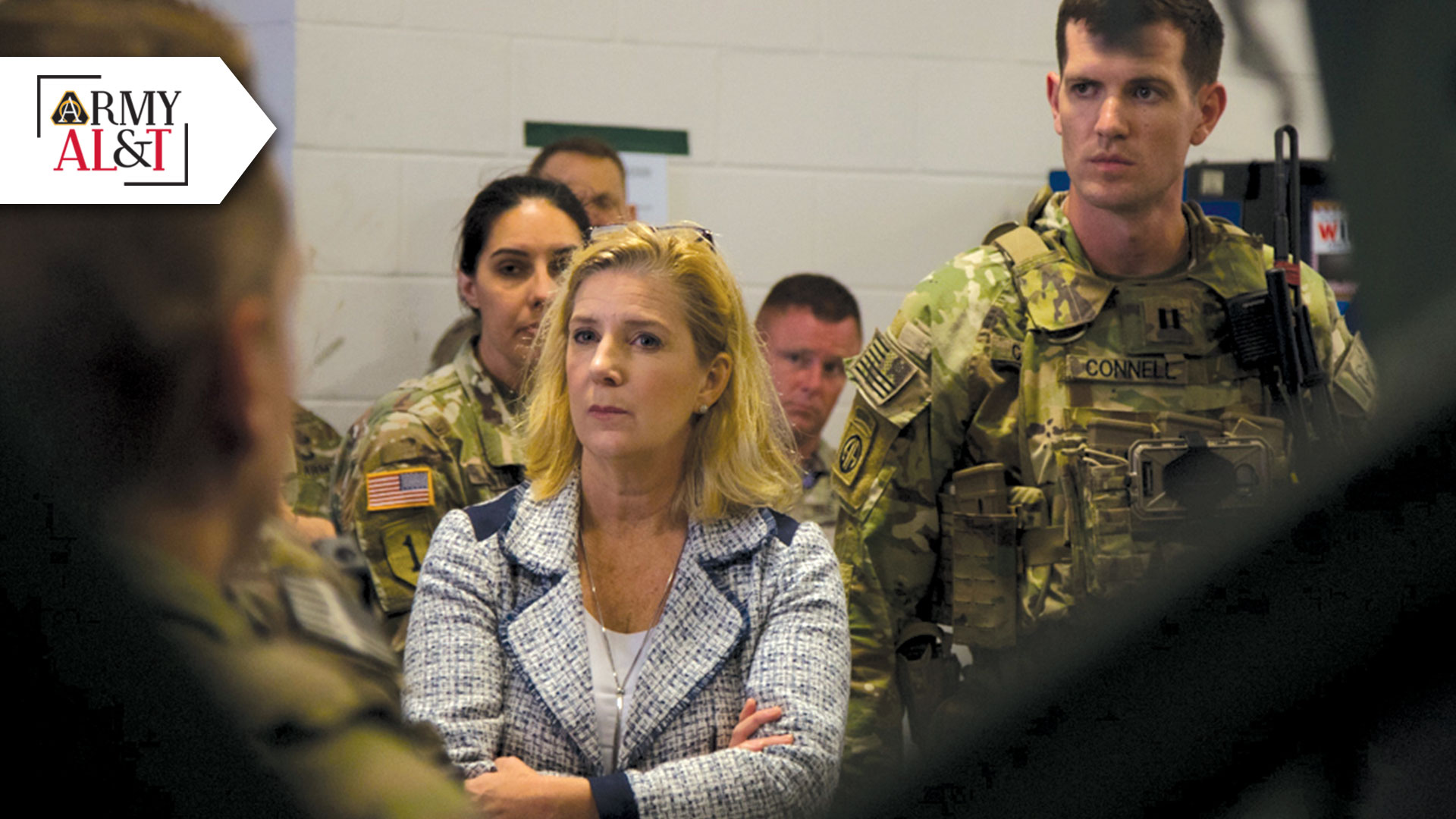
TALENT, TODAY AND TOMORROW: Secretary of the Army Christine Wormuth visited Fort Bragg, N.C., on July 19, where she met with Soldiers from the 82nd Airborne Division. Wormuth said the Army must change the way it recruits and retains its military and civilian workforce members, in order to win the war for talent. (Photo by Spc. Jacob Ward, 49th Public Affairs Detachment)
By Ellen Summey
“The Army is at war. It is a war for our greatest strength and most important weapon system, and the outcome will determine our ability to win all future wars. It is a war for talent,” said Gen. Ed Daly, commanding general of U.S. Army Materiel Command. He’s not alone in that assessment. Chief of Staff of the Army Gen. James C. McConville, Secretary of the Army Christine Wormuth, Training and Doctrine Command’s commanding general, Gen. Paul E. Funk II, and many other senior leaders have echoed those same words about the challenge of recruiting and retaining the Soldiers and civilians who make up the Army’s workforce.
“We have to think anew about how we bring people into the Army,” Wormuth said. “Certainly, part of that is making sure we’re giving them the opportunities they want, taking care of them the way they want.”
“We need the best and brightest men and women to come into the United States Army, who represent the diversity of the nation,” McConville said.
“We have the opportunity to better develop the next generation of talented leaders,” Daly said. “Because in the end, it is talent that will win this war. And winning matters.”
To that end, the Army and other federal organizations are getting a boost from the Office of Personnel Management (OPM), which is working to improve recruitment and retention across the federal workforce. OPM’s new director, Kiran Ahuja, has said that the federal government lost talent in recent years, and she is focused on rebuilding. “What I consider incredibly important from my role is that every single day when I wake up, I am thinking about the morale of this workforce, and I am putting that front and center,” she said. Part of the equation must be enhanced telework and remote work flexibility, Ahuja said.
OPM’s latest guidance and policy changes bear that out. In June 2021, OPM finalized a new rule on promotion and internal placement to allow agencies to rehire former employees at a higher paygrade than when they left the government service—something that was previously very difficult. In July, Ahuja released a memo with thorough guidance on telework and remote work, including the often-sticky question of locality pay for employees who do not reside in the immediate area of the agency or office by which they are employed.
In October, it temporarily removed all geographic restrictions from the Military Spouse Non-Competitive Appointment Authority, making it easier for government agencies to offer non-competitive appointments to active-duty spouses, as well as certain groups of veteran spouses. OPM’s associate director of employee services, Rob Shriver, said in a September blog post that this initiative is well-timed for maximum impact. “Employers across sectors and around the world rely heavily on telework and remote work as a result of the pandemic, and the federal government is no exception,” he said. “This creates a unique opportunity for military spouses—while military families often have to move frequently, they can access their work remotely and remain in their federal jobs.”
In November, OPM also released its comprehensive 2021 Guide to Telework and Remote Work in the Federal Government, which replaces the agency’s 2011 guide and includes advice for agencies making the shift to telework, remote work and hybrid variations. “We have a real opportunity in this moment of sorting ourselves through the pandemic in so many different ways to really show up as a model employer for the federal government,” she said. “Being the largest employer in this country, we have an opportunity to really set the tone.”
The agency offers a number of tools and resources on its website for government leaders seeking to prepare for the future of work. Learn more about the OPM “Workforce Reshaping” initiative at https://go.usa.gov/xebJV.
This sidebar was originally published with the article FUTURE OF WORK—PRESENT TENSE







